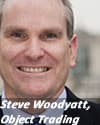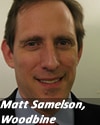A software glitch which almost led to a high-profile brokerage being wiped out last week has highlighted the perilous nature of high-speed electronic market making, experts warn.
The glitch, which came from Knight Capital’s market-making activities shortly after the NYSE Euronext open on 1 August, sent numerous erroneous orders in NYSE-listed stocks into the market, more than tripling the average number of shares traded at the start of trading to over 300 million.
As a result, the firm was forced to recapitalise following the trading error which wiped US$440 million from its books and caused price fluctuations that led NYSE Euronext to review trading in 148 symbols.
Matt Samelson, principal at capital markets consultancy Woodbine Associates, said last week’s events highlighted a lot of precarious elements in US market structure.
He explained that the activities which led to the loss were not specific to market-making but were a result of technology related to low-latency execution, adding that while related to high frequency trading (HFT), such activity should not be confused with HFT.
“At Woodbine, we’re generally in favour of high-frequency trading. Research we conducted indicated, on average, it improves spreads and overall execution quality for all market participants,” said Samelson. “Electronic market-making activities have commonality with HFT in that they both use a lot of technology for low latency trading. But that commonality belies distinct differences between the two practices.”
Samelson said the overarching issue was defining the type of market that the industry wanted.
To be expected
“We can’t have a fragmented market connected by private linkages that fosters competition among venues and orders without expecting a technology ‘arms race’ that carries with it the risk of Knight-type debacles,” he said. “To really address the problem, we need to attempt to centralise liquidity to a degree and remove at least some impetus for fast technology attempting to capture liquidity across disbursed markets.”
Samelson advised that a start toward such ends would be to tweak the maker/taker pricing model at exchanges, mandating certain consistency across exchanges.
“This would eliminate some high-speed market making and other latency-related trading while maintaining some of the good it brings in terms of narrower spreads, liquidity, and the like,” he said. “However, this kind of tinkering is far from an exact, predictable science. Calls to limit high-frequency trading or improve risk control around low-latency infrastructure and algorithm testing, misses the point and only treats the symptoms.”
Knight Monday completed a US$400 million equity financing agreement with a consortium of new investors including broker Jefferies, investment firm Blackstone, global market maker GETCO and broker TD Ameritrade.
“Knight’s financial position and capital base have been restored to a level that more than offsets the loss incurred last week,” said Tom Joyce, chairman and chief executive officer, Knight Capital Group. “We thank our clients, employees and partners for their steadfastness during a brief yet difficult period and we are getting back to business as usual.”
Knight said the software which led to the trading error was removed from the company’s systems soon after the glitch and the firm is continuing to review the incident. The sudden influx of orders was initially picked up by NYSE Euronext, which then alerted Knight. The broker subsequently took the necessary steps to shut down its system, which reportedly took around 45 minutes.
Busted trades
NYSE met with other exchanges to bust trades in six stocks: Wizzard Software, China Cord Blood, Reaves Utility Income Fund, E-House (China) Holdings, American Reprographics, Quicksilver Resources, executed between 09.30 and 10.15 EST.
NYSE has temporarily suspended Knight’s market-making responsibilities on 650 securities for which it is responsible, and GETCO is presently taking over the market making of these instruments.
The exchange’s rules allow the temporary reallocation of DMM responsibilities if it is deemed in the public interest. A number of buy-side firms have stopped trading with Knight, while some retail brokers – including new Knight investor TD Ameritrade and Scottrade are reported to have returned their flow.
As part of the temporary reallocation, GETCO will assume responsibility for Knight’s DMM staff and use its technology and systems throughout the combined operation. NYSE Euronext added that it would continue to monitor the recapitalisation plan of Knight prior to returning the DMM allocations to the firm.
“We believe this interim transition is in the best interests of investors, our listed issuers, market stability and efficiency, as well as Knight, as the firm finalises its equity financing transaction,” said Larry Leibowitz, chief operating officer, NYSE Euronext. “Our first priority is to ensure market integrity and an orderly trading environment in which investors and all market participants have confidence.”
Among market participants’ concerns is that Knight’s system was operating incorrectly for some time, which led to the losses.
“The amount of time that it took Knight to rectify the issue was surprising in the context of today’s high-speed market environment,” said James Overdahl, vice president at NERA Economic Consulting.
Overdahl noted that a key area of focus for the Futures Industry Association’s Proprietary Trading Group (FIA PTG), a trade body that counts HFT firms among its members, is the challenges firms face when testing and implementing new systems. The FIA PTG release guidance in March 2012 to help its members establish internal procedures, processes and controls for the development, testing and deployment of trading software.
As a result of the Knight incident the FIA PTG will revisit these guidelines and see if they need to be revised,” he added. “The most powerful type of regulation comes from the market itself. The industry remains willing to share their market expertise with policy makers.”
High-frequency failing
Others note that the growing frequency of technology-related issues that have disrupted trading require more coordinated action among the different players in the trading chain.
 “We need to
consider having a minimum set of consolidated information that is shared
between the buy-side, the broker that provides access to a market, and the
liquidity pool itself,” said Steve Woodyatt, CEO at trading technology vendor
Object Trading. “There have been some efforts between brokers and individuals
buy-side firms, but it is one area we feel needs to be integrated a lot
further.”
“We need to
consider having a minimum set of consolidated information that is shared
between the buy-side, the broker that provides access to a market, and the
liquidity pool itself,” said Steve Woodyatt, CEO at trading technology vendor
Object Trading. “There have been some efforts between brokers and individuals
buy-side firms, but it is one area we feel needs to be integrated a lot
further.”
Woodyatt said this should include links between firms that are monitoring systems while they are in production for variances away from normal behaviours and trading system stop losses that monitor activity in as close to real time as possible and prevent trading if it exceeds a pre-defined limit.
The issues faced by Knight compound recent IPO-related glitches at Nasdaq OMX and BATS Global Markets, and bear some similarity to the flash crash on 6 May 2010, when a rogue algo trade sent US markets crashing within minutes before they rebounded just as quickly.
Nasdaq OMX is planning to pay compensation of US$62 million divided across members affected by its handling of the Facebook IPO. The first trading day for the social networking site was delayed by half an hour, with many investors unable to determine whether their trades were executed and at what price. Some banks, including UBS, which said it lost almost US$350 million on the Facebook IPO, are considering pursuing legal action against Nasdaq OMX. BATS Global Markets was forced to pull its IPO, the debut stock to be issued on its own new listings service, after a technology error.
A raft of post-flash crash measures have already been adopted, including single-stock and market-wide circuit breakers and moist recently, a consolidated audit trail of post-trade data across asset classes. Following the Knight incident, SEC chairwoman Mary Schapiro said she has asked staff to “accelerate ongoing efforts” to propose a rule that would require trading venues to maintain the capacity and integrity of their systems”.
Knight was unavailable for comment.
Additional reporting by Bruce Love
